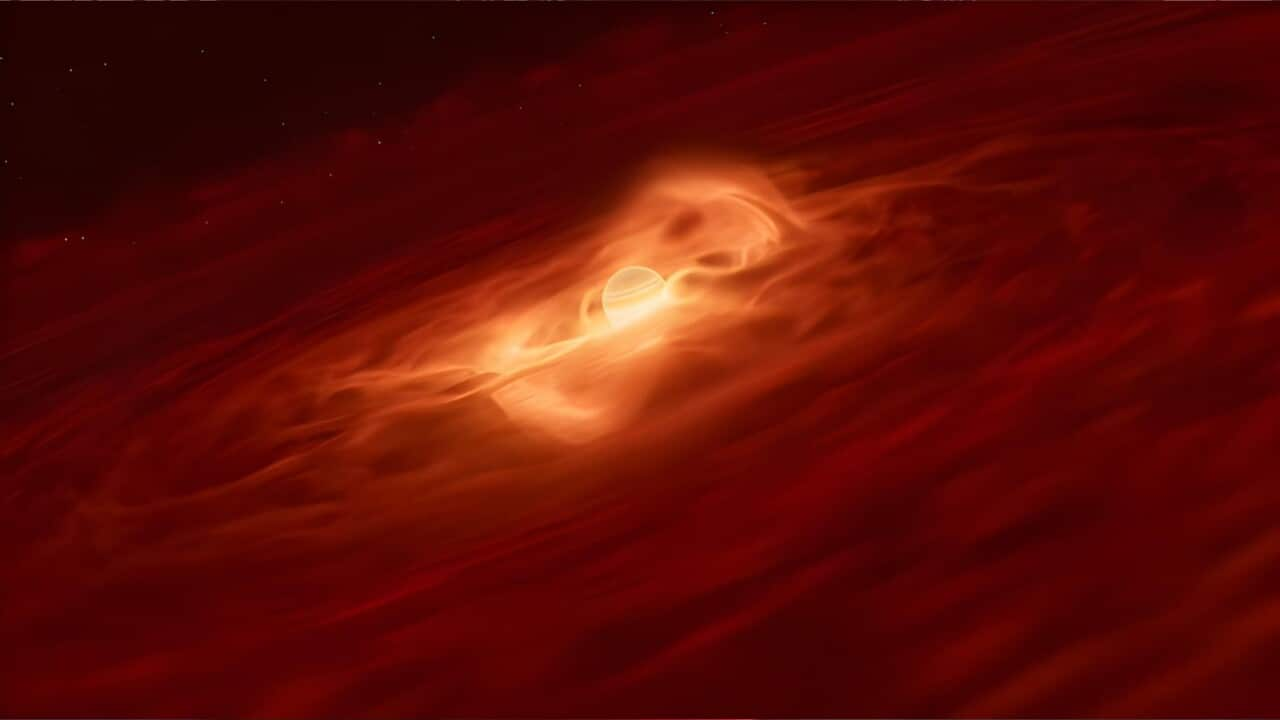TRANSCRIPT
Six hundred and twenty light years from Earth, a planet-sized object is doing something very unusual.
The object's been named Cha 1107-7626 and it's eating material from the disc surrounding it very quickly... at the rate of six billion tonnes a second.
Unlike Earth and other planets we are familiar with in our own solar system, rogue planets float freely through space, and don't orbit a star.
Astronomers believe there could be trillions of such rogue planets just in our own Milky Way galaxy alone.
Normally, they're hard to spot because they drift through space in perpetual darkness.
But this one is different.
The gas-and-dust-guzzling rogue planet is showing behaviour which has been seen in stars - but not in smaller objects.
Víctor Almendros-Abad is an astronomer at the Astronomical Observatory of Palermo and lead author of the study.
"This is what we were studying at this point. We were trying to study how fast is the rate of material getting into the object. And what we suddenly found is that there was a very strong growth of material that was impacting the central object. And when we saw this, it's when we realised that it was a very special phenomenon. This is the first time that this kind of phenomena has been observed in such a low mass object."
The planet is relatively young - at one or two millions years - but is already five to ten times larger than Jupiter in our solar system.
It grows by sucking in matter from a disc that surrounds it — a process called accretion.
The gas and dust it’s consuming is fuelling rapid growth.
Victor Almendros-Abad says this is not normal.
"So in this growth spurt, what we found is that there was an increase by almost an order of magnitude. Almost 10 times more mass and flux coming into the object. So this is very significant because you have typical variations because of some inhomogeneities (localised regions) in the material around it. But this kind of variation is not typically observed. It's not routine variability."
Scientists are speculating that magnetic fields may be funnelling material into the planet - but whatever the cause, the observations are exciting.
Amelia Bayo is an astronomer at the European Southern Observatory is a co-author of the report.
She says the speed at which things are happening is unexpected.
"In astronomy, when we talk about quick things. For instance, we say that star formation happens quickly - and quickly we mean a million years. So quickly is very relative. But this object went from gaining material at a very different rate. So at a low level, let's say, to gaining material hundreds of times more efficiently in days. Something that happens in a matter of days and months in astrophysics is crazy."
The team used data from the James Webb Telescope and the European Space Observatory’s Very Large Telescope to observe the rogue planet.
By comparing the light emitted before and during the burst, astronomers could work out details of how the planet was growing – or, to use the astronomers' technical term - accreting.
Victor Almendros-Abad again:
"So we will definitely follow up on this object because we have observations from this object from almost 20 years ago, and 15 years ago, and we see a similar behaviour. So there are indications that this is a recurrent event. Now we need to understand how recurrent, how important, how long-lasting because we didn't get an idea of the full duration of this burst. We just had a lower limit, let's say, because after two months, we couldn't continue observing. So it could be possible that the object is still in this enhanced accretion phase."
But the researchers say it's never going to get big enough to become a full grown star, as it won't become massive enough to ignite a fusion reaction at its core.
But they say the fact that a planet-sized object can behave like a star in so many ways is awe inspiring.













